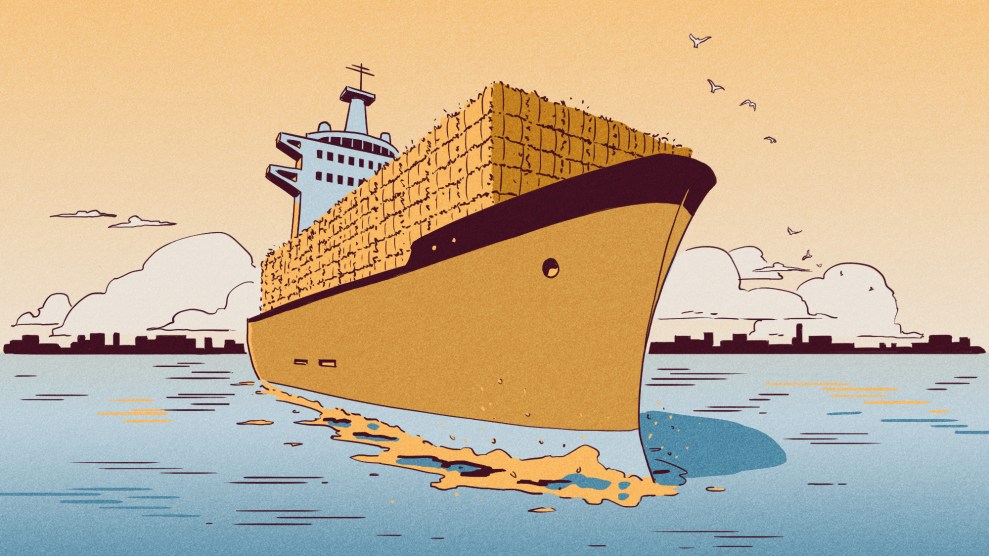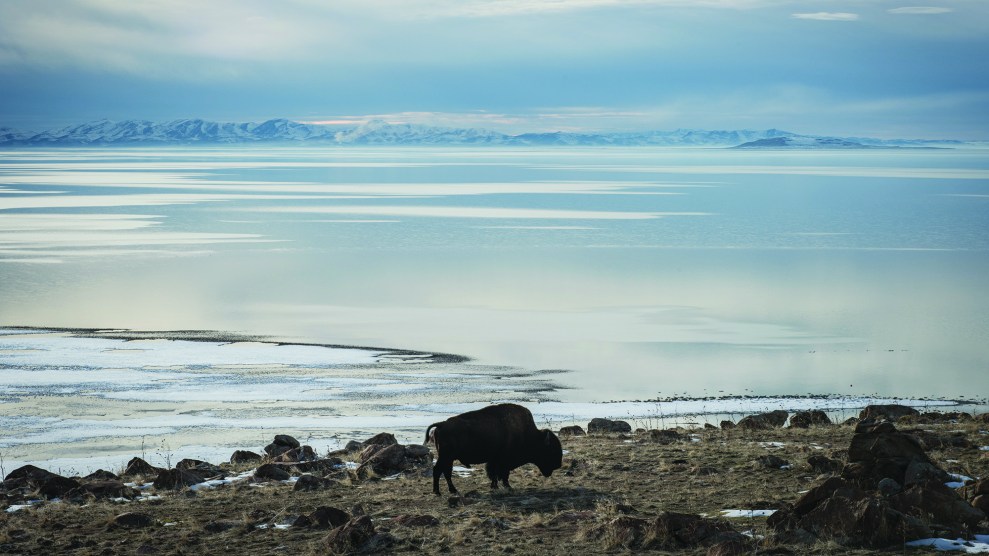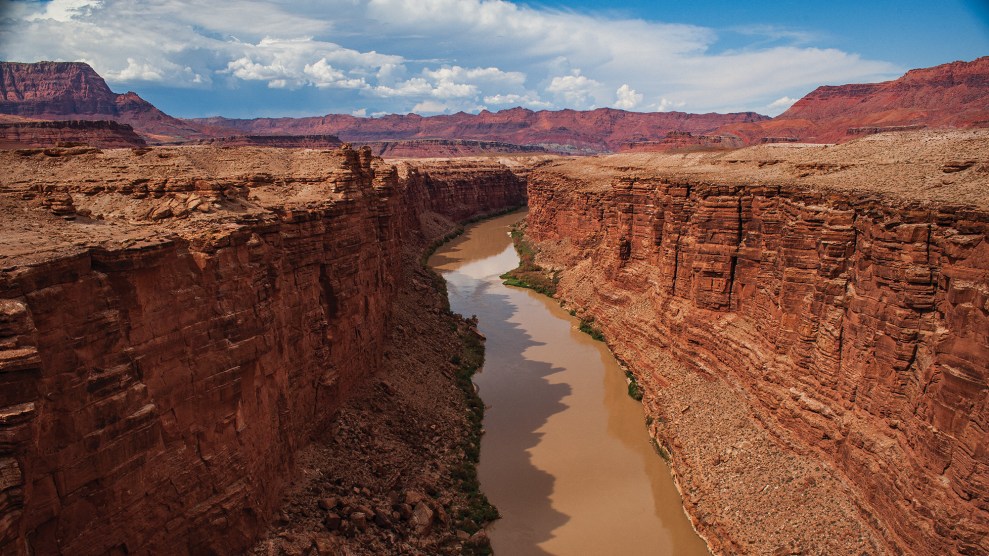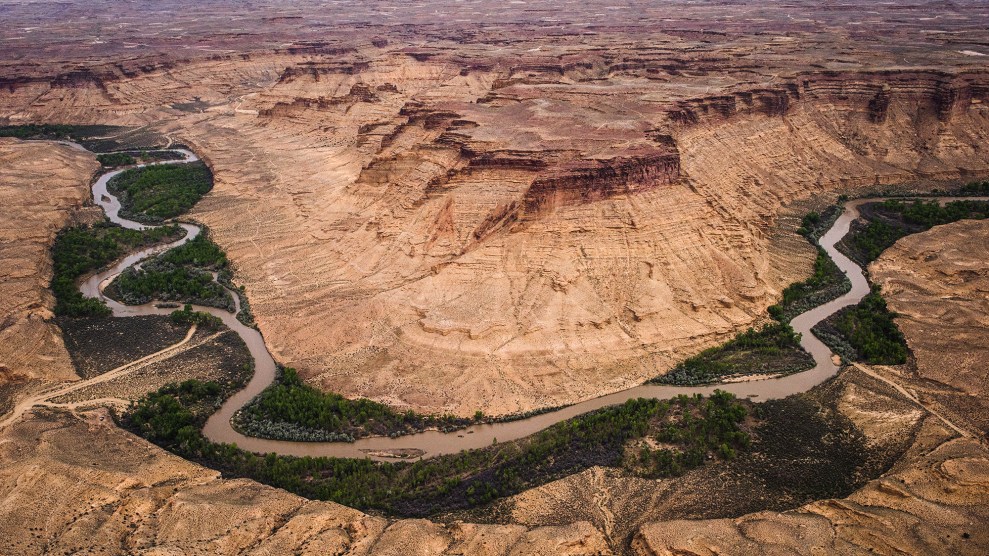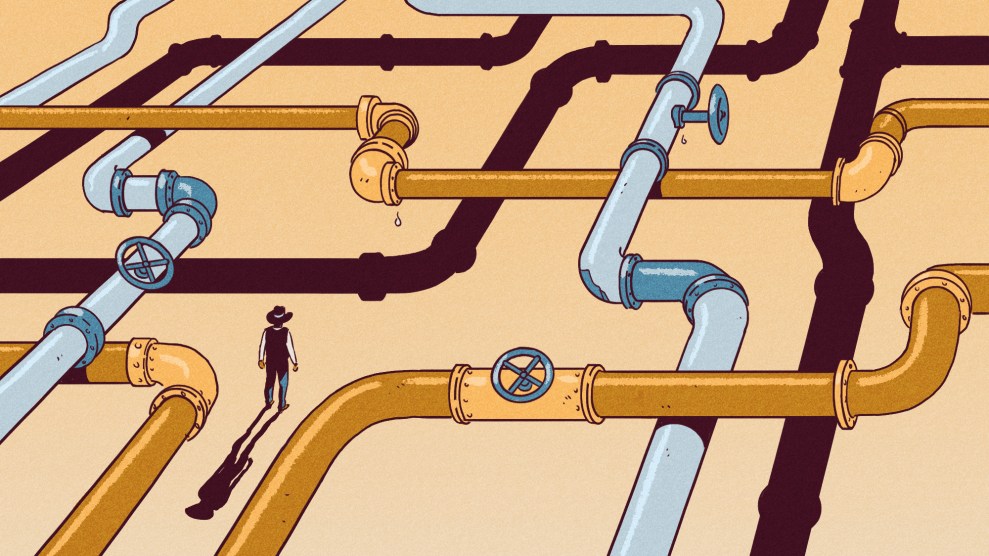
Jack Richardson
Water is life. It’s also big business. In our November + December 2023 issue, Mother Jones dives into the West’s deepening water crisis—and the forces behind it, from historic drought to short-sighted policies to corrupt lawmakers and the special interests they serve. Read the full package here.
A dusty old map changed the course of Aaron Million’s life. One day in 2002, back when he was a resource economics master’s student studying in a Colorado State University library basement, he came across a 1918 survey and had a “lightbulb moment.” The map showed a 41-mile crescent of the Green River—a tributary of the Colorado River that mainly runs through Wyoming and Utah—swooping through Colorado’s northwest corner. “I’ve cowboyed that river,” Million, who comes from a ranching family, recalls, but “I had frankly forgotten it came into the state.”
He was struck by the idea that Coloradans could stake a claim to the Green’s water—and soon learned that no one had ever tried. Thus began his ongoing quest to port the river’s water hundreds of miles out of Utah, across Wyoming, over the Rockies, and into Colorado’s arid Front Range. If completed, Million says it would likely be “the largest privately funded water project in Western history.”
Large-scale 20th-century infrastructure projects in the Colorado River Basin made the West as we know it, funneling water across deserts and sprouting farms, suburbs, and golf courses. But in the early 2000s, society’s thirst became stronger than the Colorado’s flow, a situation made worse by rising temperatures and other shocks of climate change. Today, even as the river faces an annual shortage of 1.5 million acre-feet, water managers continue to propose massive diversions to booming metropolitan areas and farmland. One contentious multibillion-dollar venture, which the Trump administration attempted to fast-track in 2020, would draw up to 86,000 acre-feet of water a year from the Lake Powell reservoir to a county in southwest Utah, where water use per capita is already double that of Tucson, Arizona. If every proposed dam and diversion project were built, an additional 1.4 million acre-feet from the river and its tributaries would be siphoned every year, according to a list compiled by the nonprofits Great Basin Water Network and Save the Colorado.
Water managers should instead be pushing conservation and water recycling, argued researchers in a 2012 report by the National Resources Defense Council. But one reason they aren’t, says Denise Fort, an environmental law professor emeritus at the University of New Mexico who co-authored the report, is that “from the point of view of an elected official, if you can bring home over the years a billion for a water project, that’s far easier than telling people in a region they’re going to have to cut back.”
Along the Front Range, where Million’s 338-mile pipeline would end, the population has swelled even as the water supply faces threats, including the state of Colorado’s debt to other states under a 1922 pact dividing up the Colorado River’s water. Million thinks his pipeline, which he boasts is a multipurpose, “21st-century platinum project,” can not only help quench demand from agriculture and the state’s growing population, which is expected to double by 2050; it can also furnish up to 1,000 megawatts of hydro power. The vast majority would be generated by turbines turned with gravity-fed pumped storage, which generates electricity when grids need it most.
But Million’s vision for the project, which would divert 55,000 acre-feet from the Green a year, hinges on his conviction that the Green is running on a surplus; he says modeling by the Bureau of Reclamation and other organizations suggests the river “has 700,000 acre-feet above the knees,” the depth analysts say is needed to keep things flowing for both recreational rafters and several species of fish.
Bart Miller, healthy rivers director of the nonprofit Western Resource Advocates, has a different perspective. “Basinwide, there’s a shortage,” he says, explaining that even if the Green had a sustainable supply—something Miller says he’s never heard anyone suggest—whatever it could offer should flow into the drying Colorado. “At some level, it’s all connected.”
And there are other claims on the Green. At a conference about the Colorado River earlier this year, a representative of the Utah Utes argued that their tribe was owed 500,000 acre-feet annually from the Green based on a 1965 agreement. But without infrastructure and clean water rights, “we’ve had to just watch it flow past us every year,” the tribal vice chairman told Cowboy State Daily.
In 2020, Utah’s Division of Water Rights rejected an application key to Million’s project mostly out of concern that Colorado hadn’t weighed in. Million sued and is awaiting a decision. In the meantime, the company he founded to build the pipeline, Water Horse Resources, signed a deal with MasTec, a Fortune 500 construction outfit, and continues to attract investors.
In August, the Bureau of Reclamation announced that, despite blockbuster winter snowfall, Lower Basin states would still have to make water cuts. Million views his pipeline and its green power potential as conservation friendly. But I kept thinking of something he said when recounting his eureka moment in the library basement. The old map was “a treasure map,” he gushed, representing “literally billions of dollars of water sitting there.” As the Western water crisis deepens, the question is how to share the Colorado River Basin’s bounty fairly.

